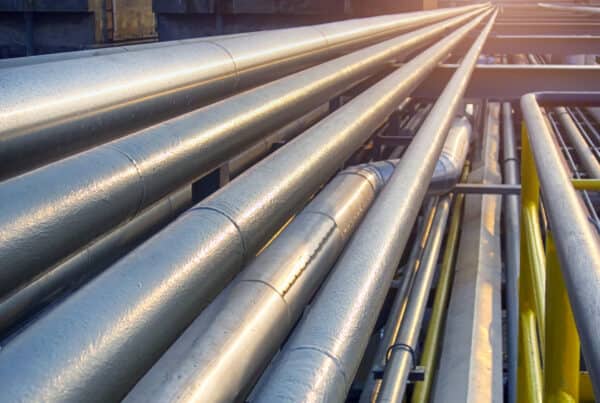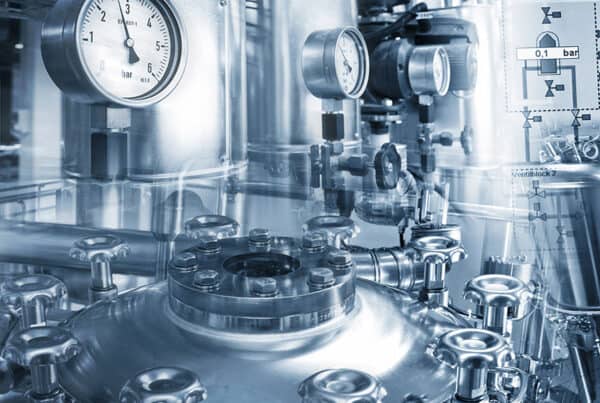
How do you determine the quality and integrity of the weld? Is it based on the size and appearance of the weld or the number of defects? These are critical questions the welders should ask when performing a weld. And the first approach to getting them answered is through visual inspection.
Quality pipe welds are critical to the reliable transportation of process fluids in many industrial settings, including oil and gas, power generation, nuclear, and many others. Visual inspection attempts to ensure this reliability by assessing joint preparation, fit-up, weld control, and the final result, i.e., the process encompasses all steps before and after the actual weld. Following the checklist of these steps during orbital welding can reduce the number of defects and minimize the risk of the weld getting rejected during non-destructive testing (NDT).
Pipe Welding Visual Inspection Requirements
Frequently, pipes are exposed to extreme temperature and pressure conditions which require structural pain points like welds to be strong and defect-free for effective operation. A visual inspection aims to identify discernible defects throughout the pipe welding process, which starts well before the actual weld begins.
Pre-Weld Pipe Inspection
The pre-weld pipe inspection phase includes making sure the preparation criteria are met before commencing the weld. A visual inspection can be done for–
| Surface cleanliness | The contaminants such as slag, dust, oil, paint, rust, and grease at the weld surface can lead to multiple inclusion-induced defects. These must be removed along the interior and exterior of the pipe using solvents such as acetone. |
| Joint preparation | Operators can examine the pipe ends to check for the required groove type and bevel angle. V-groove is the most common type and is beveled between 37.5 to 60-degree angles. |
| Alignment | Tools such as the alignment gauge, clamps, and micrometers can help operators maintain precision alignment and spacing between the pipe sections. |
In most cases of orbital pipe welding, the butt ends of the pipe are joined together and tack-welded for positioning. The assessment of tack weld quality is often essential before permanently welding them in place.
In-Process Inspection
Pipes, especially those of larger thickness, go through multiple passes to form a complete weld. Given this fact, it is essential to visually inspect the weld midway to check in on the progress and fix the flaws as they form. Root pass inspection is critical to forming a strong foundation for the weld, and the welders should check for any cracks or gaps to ensure its integrity.
During welding, these are common weld defects to look out for:
| Inclusions | The presence of foreign materials in the weld pool may be visible as dark spots or voids on the weld surface. |
| Undercut | Undercut can be observed as grooves running along the edge of the weld metal, or as depression in the weld surface. |
| Overlap | Any ridge or bump along the edge of the weld can be a sign of overlap in the weld. |
| Lack of fusion | Lack of fusion leads to visible/ invisible gaps or voids in the weld. |
| Spatters | Small bumps of metal seen on the weld surface are spatters. |
| Porosity | Porosity in the weld can be seen in the form of small bubbles or cavities. |
| Cracking | Cracking may appear in the weld as fine lines or fractures in a branching pattern. |
Identification of defects in early stages with visual inspection prevents waste or rework. When orbital welding, operators can monitor the weld and optimize parameters during the process as a preventive measure.
Post-Weld Inspection
All welds require inspection upon completion to ensure it meets all required industrial compliances. Operators tend to inspect the final weld profile — the weld size should conform to the specification. For example, the throat cannot be too concave or convex. The defects (as mentioned above) signify possibly compromised pipe quality. Discontinuities and distortion beyond the acceptable limit lead to damage or the necessity to rework.
Most defects are difficult to detect visually and require specialized NDT methods. However, one easy way to find the hidden gaps is to spray the weld area with soapy media. If there are bubbles, the escaping air indicates the presence of leaks or pores. This inspection isn’t ideal, given that it can cause contaminants to enter the weld in the presence of leaks, making rework difficult. Using dyed gas to find leaks is much more effective.
For small pores or cracks, dye-penetrant testing can be used. Once the dye is sprayed, it soaks on these defected spots and stays after the surface has been wiped. This dyed area can then be removed or reworked.
Other Inspection Areas
Other areas where visual inspection may be effective in creating a quality weld may include:
- Worksite Inspection: It is beneficial to look out for cleanliness at the weld site. Make sure the weld area has enough clearance, is well-ventilated, and does not have a wet environment.
- Welding Equipment Inspection: It is imperative to inspect the welding equipment before commencing the welding process. Check for the following:
- Tungsten size
- Weld head cleanliness
- Feed wire quality
Gain Quality Result When Orbital Pipe Welding
Orbital welding has been a highly effective technique for high-quality pipe welding. The process produces more clean, consistent, and quality results than any other welding technique. The automated system controls the weld parameter to provide a precision weld that can be reproduced with high accuracy. However, precision and efficiency can only be achieved, given that all the weld requirements are met.
With pipe welding visual inspection, inspectors can catch the discrepancies that need to be addressed before and during the welding. The weld issues identified after the process must be addressed before the operation initiates. You can reduce your welding and repair costs with this highly economical and effective inspection method — visual inspection.
Arc Machines, Inc specializes in GTAW orbital welding machines for pipe and tubing and supports customers with training, service, and advice for getting the most from their orbital welding system. For inquiries regarding products, contact sales@arcmachines.com. For service inquiries, contact service@arcmachines.com. To develop a custom solution, contact us to arrange a meeting.




